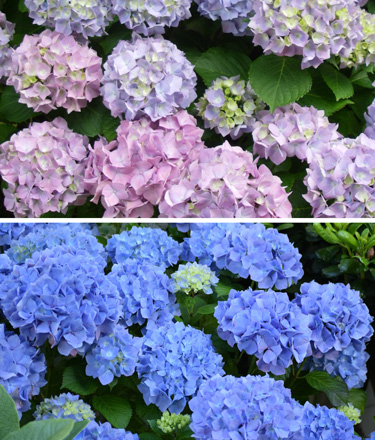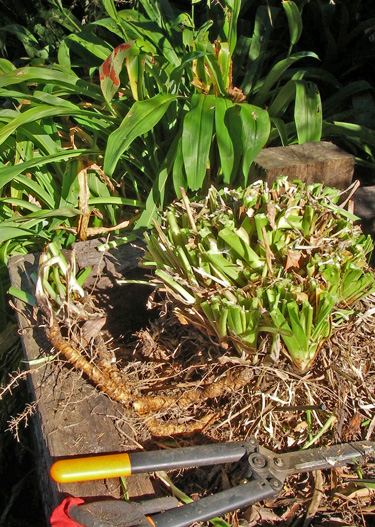Chemistry in the garden
Roses may be red but my hydrangea is blue! Back in October I wrote:
I’ve mentioned before the two hydrangeas I’m keen to change from pink and red to blue and purple. The flower buds are just showing, so they’ve been dosed a couple of times with a solution of aluminium sulphate, ¼ cup dissolved in 10 litres of water. In six weeks I should know if this trick works.
Well, I can happily report that it works a treat. What was washed out insipid lilac pink flowers last year are now brilliant blue and what better way to illustrate this than with photos and I promise you it is not photo-shopped. The red hydrangea is still red, just a deeper hue, so that hydrangea variety must keep its colour fixed.
I expect to have to do the same treatment again next year to get the same result but it is such a glorious colour who minds a little extra work. Here’s how you can change the colour…
The colour of a hydrangea flower depends on the chemical makeup of the soil it is planted in. If the soil is high in aluminium and has a low pH (acidic), the hydrangea flower will be blue. If the soil has either a high pH (alkaline) or is low on aluminium, the flower colour will be pink. In order to make a hydrangea change colour, you have to change the chemical composition of the soil it grows in.
In my case, to achieve the blue, I’ve added aluminium to the soil by dissolving aluminium sulphate (you can buy this at the garden centre) in water. I have tried over the years to make the soil more acidic using flowers of sulphur, acid fertiliser and pine needles but these have had little effect. I think the critical step in achieving success this time was the timing of the application of the aluminium solution – when the flower buds first show which is about 6 weeks before flowering.
Achieving pink flowers should be a little easier with the application of lime to raise the ph of the soil, but I’m wondering if applying the lime at the same time produces the same dramatic result. However, as I don’t want pink hydrangeas I’m not planning on performing that experiment.
Now the hydrangeas look great it’s time to tidy the Reinga lilies (Arthropodium cirratum). These strappy plants are excellent fillers in the garden. Being native makes them even more appealing and they are perfect in that most difficult of garden spots – dry shade. By now they have finished flowering and will be dripping with seed heads. They are prolific seeders – a bit like agapanthus – but unlike that plant, the seedlings are easy to pull out and may be quite useful where they decide to grow.
Over time Reingas get a bit spotty from disease and holey from snails, but you can give the plant a fresh look by giving it a total chop back with a pair of shears. The plant will grow new leaves in a few weeks. As they age they develop woody stems below the leaves. These can be broken off, often with roots attached and used as new plants. Very old plants can be pulled out and replaced in this way.
This past year I’ve been allowing some annual plants, both flowers and vegetables, to go to seed. Parsley, lettuce and spring onions in the vege garden; wildflowers, Anzac poppies, aquilegia, borage and pansies & violas in the flower garden. The pansies have been most rewarding with new plants popping up in the gravel and producing most unusual colours. I’ve collected some of the poppy and aquilegia seed and will scatter them in other areas. It is a great way to fill gaps, and add colour and surprise to the garden.
9-Feb-2015




